Ten design projects from students at Monash University
An interactive installation examining the influence of shadows on human perception and a pavilion designed for the Burning Man festival are included in Dezeen's latest school show by students at Monash University.
Also featured is a platform designed to help older Chinese people understand the developing language of China's younger generation and a research project that explores how urban environments can become breastfeeding-friendly.
Monash University
School: Monash Design, Monash University
Courses: Bachelor of Design/Master of Design
Tutor: Gene Bawden, Head of Design
School statement:
"Positioned at the intersection of several creative disciplines, our Master of Design provides you with a platform to explore advanced principles in contemporary design that will enhance your design practice and provide you with a platform to be an innovative leader.
"This project-based and studio-focused course offers you the opportunity to extend your learning within a specialisation area of interaction design, multimedia design, or collaborative design.
"At Monash, we create the designers the world needs – inventive, purposeful, and visionary. With specialisations in Communication Design, Industrial Design, Spatial Design, or Collaborative Design, our Bachelor of Design degree responds to the increasing global demand for designers who can respond to the complexity of contemporary global society, be inclusive and ethical and contribute sustainably. Our most complex challenges are a call to action for all designers."
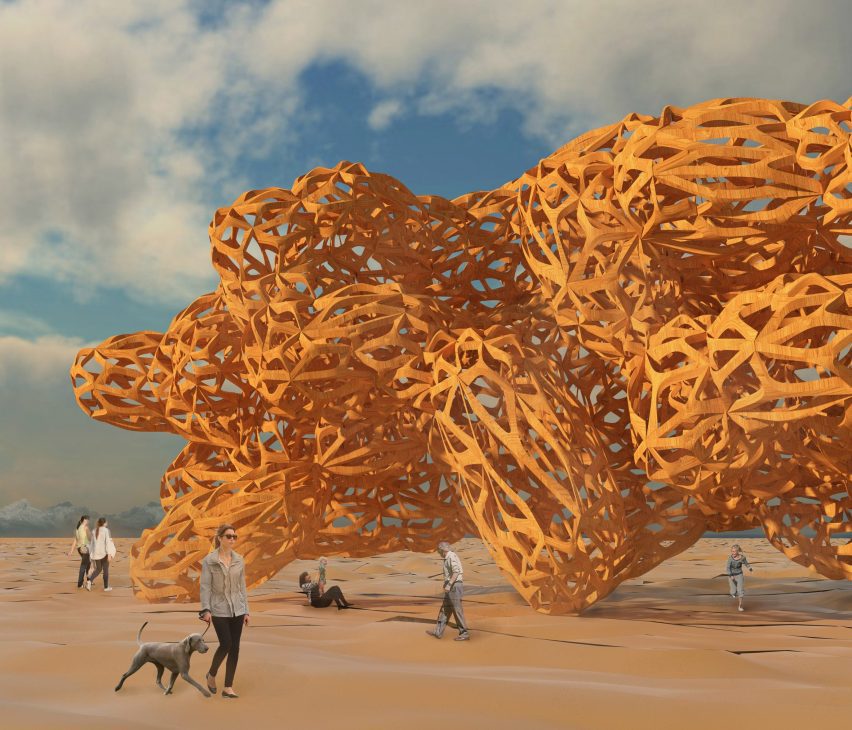
The Embrace by Natkanok Onratn
"The Embrace is a temporary pavilion designed for the Burning Man festival at Black Rock City, Nevada. The pavilion responds to the loss of opportunities for social interaction due to physical distancing requirements in the current global pandemic. It creates a constantly changing spatial atmosphere that embraces its occupants.
"Rays of sunlight are filtered through the structure resulting in a variation of lighting patterns that enrich experiences of its interior.
"People can inhabit the complex multi-levelled structure in various ways. By climbing and exploring, individuals can reach different levels of the structure that afford views out across the desert landscape."
Student: Natkanok Onratn
Course: Bachelor of Design/Spatial Design
Tutor: Peter Charles
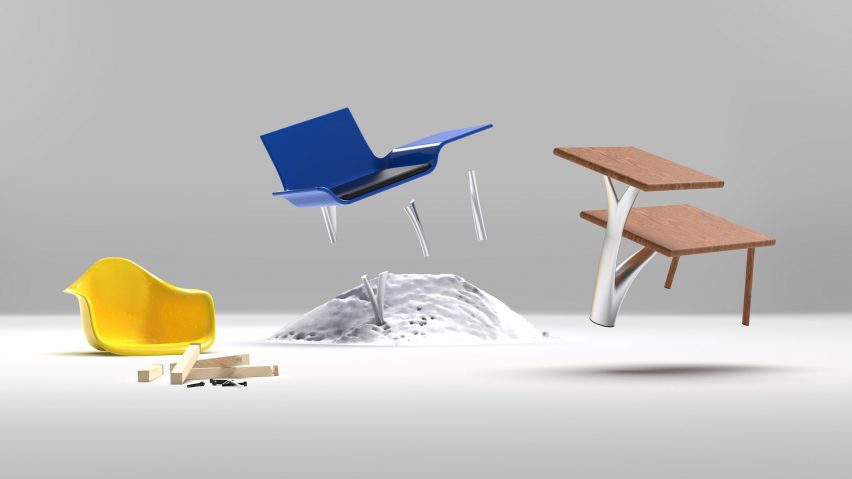
The ÅTERSTÄLL Process by Vincent Chu
"The ÅTERSTÄLL process confronts the waste and environmental impact associated with discarded and broken furniture. Customers have their broken furniture disassembled and placed into the ÅTERSTÄLL process.
"The piece is 3D scanned, from which the artificial intelligence can identify the furniture type, mounting points, and required loads to be supported.
"The new geometry is optimised to minimise material usage, before being 3D printed for the customer, ready for re-assembly."
Student: Vincent Chu
Course: Bachelor of Design/Industrial Design
Tutor: Dr Rowan Page
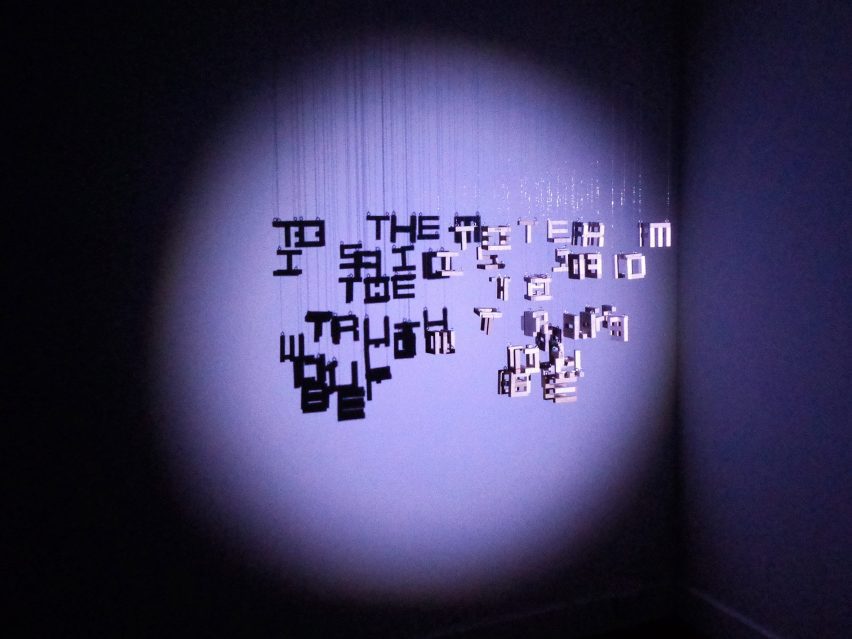
POC (Perception, Observation, Connection) by Oly King
"POC is an interactive installation exploring the influence that shadows have on our perception. POC allows people to pause, observe and reflect. It aims to inspire a greater connection to and appreciation for our surroundings.
"The installation is made up of 27 hand-made hybrid letter sculptures, projecting three different composite shadows from three separate angles.
"The viewer is given a torch to explore the darkroom and installation. The projected shadows transform in a state of constant flux as the light navigates the room. Taking the time to observe the present allows us to connect with not only the physical world but also our own wellbeing."
Student: Oly King
Course: Bachelor of Design/Communication Design
Tutors: Rick Milovanovic and Tristan Ceddia
20,000 Leagues Under the Sea — Title Sequence by Tao He
"This is a sequence for a TV mini-series based on the original science fiction novel by nineteenth-century author Jules Verne.
"The animation brings a new sense of drama to a story over 100 years old. Tools used include Cinema 4D, After Effects, Adobe Premiere Pro, Adobe Illustrator, and Adobe Photoshop."
Student: Tao He
Course: Master of Design/Multimedia Design
Tutor: Jeff Janet

GreyZone: Experience Exhibition by Shangyu Huang, Chongbo Gao, Wanting Qiao and Shen Wang
"GreyZone is a digitally-enabled interactive exhibition that explores the world of a private detective. It allows its audience to understand detective processes by guiding them to observe and explore the detective world in a more detailed way.
"It also enables them to recognise the motive for committing a crime; and explore human emotions such as friendship, family interactions, and personal obsessions.
"The exhibition space — both real and virtual — connects different audience members through a combination of art installation, spatial experiences, electronic screens and AR/VR exploration."
Student: Shangyu Huang, Chongbo Gao, Wanting Qiao and Shen Wang
Course: Master of Design (Collaborative Design/Multimedia Design)
Tutor: Jeff Janet
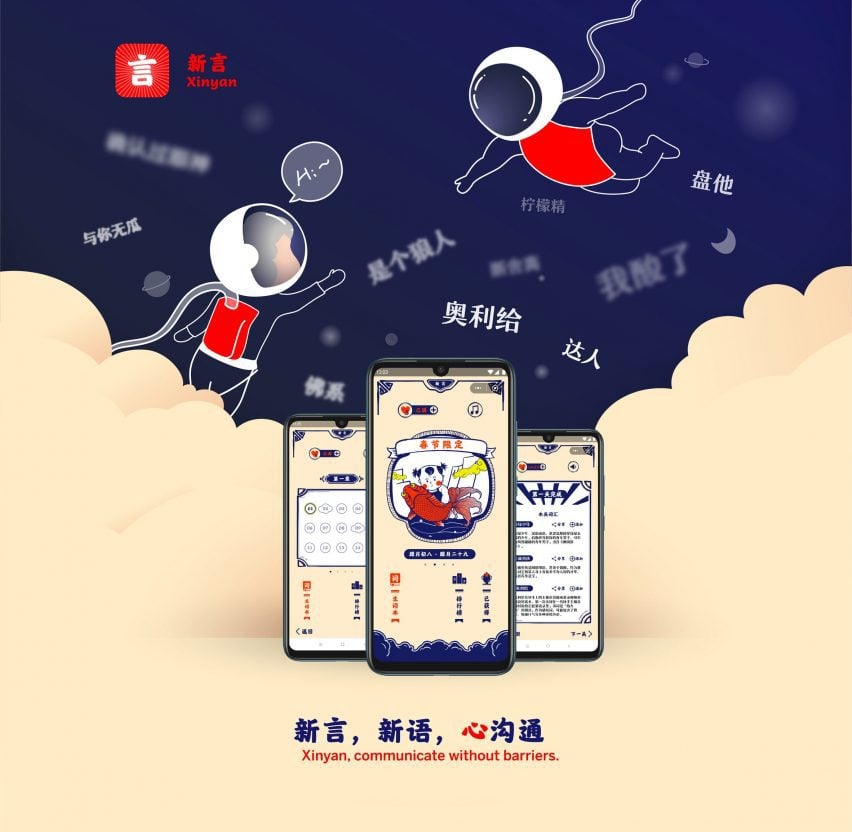
Xinyan, Communicate without Barriers by Lan An
"Xinyan is an education platform that aims to help older Chinese people understand the slang and emerging language of China's younger generation.
"The project is intended to be a game located in China's most popular communication platform, WeChat. The game operates as a series of quizzes to help users understand and memorize the meanings of new words and phrases, but in a fun and entertaining way."
Student: Lan An
Course: Master of Design/Interaction Design
Tutor: Dr InDae Hwang
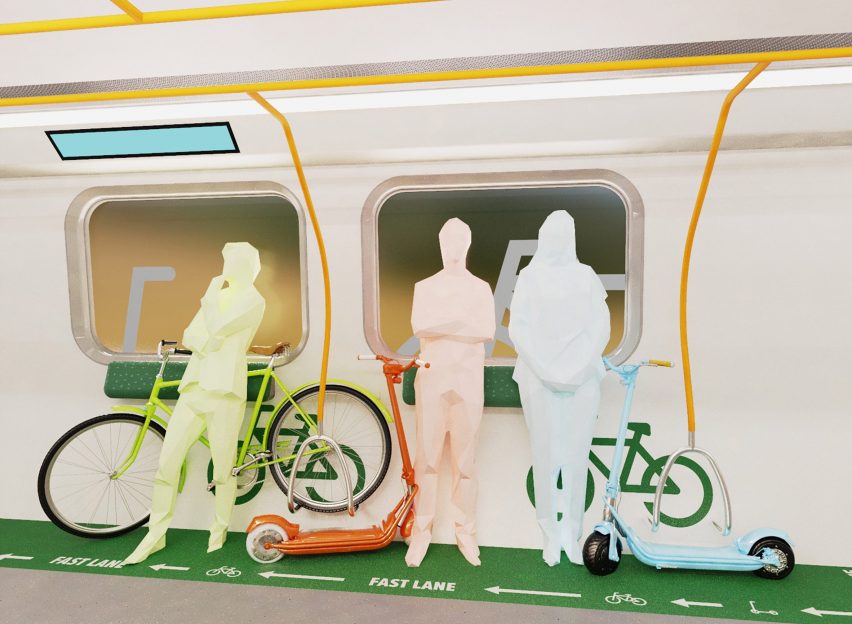
Getting Onboard by Lisa Fu
"When we think about the future of transport, part of its challenge includes how we can best support people to transition to more sustainable travel behaviour and practices.
"As such, the design of dedicated onboard bicycle zones for metropolitan trains in Melbourne (Australia) represents a viable, sustainable alternative to car-based transport, as well as a gateway to more people engaging with micro-mobility travel options.
"Passenger pain points, travel patterns and opportunities uncovered through design research and practice are embodied in the design of the rail interior space, wayfinding, and digital passenger information display systems."
Student: Lisa Fu
Course: PhD Design
Tutors: Dr Robbie Napper and associate professor Selby Coxon/Mobility Design Lab
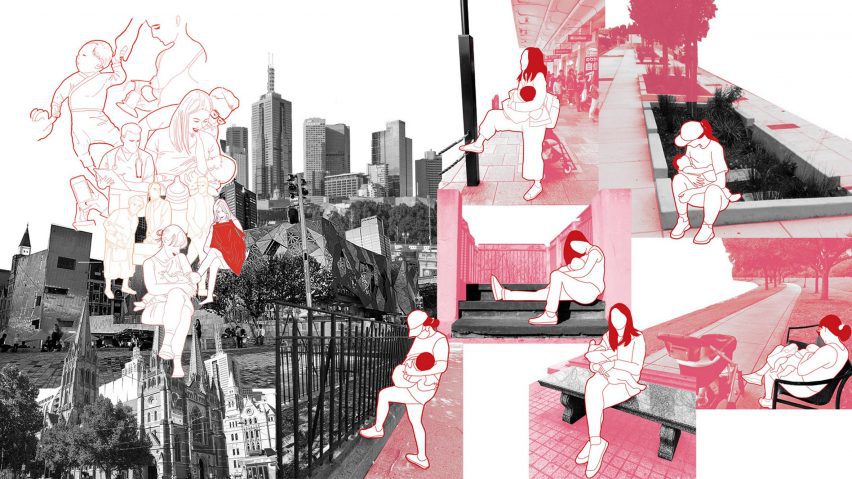
An Intersectional, Gender-Sensitive Design Framework for Planning a Breastfeeding-Friendly Urban Environment by Enira Arvanda
"Women who breastfeed often experience complexities and social stigma in public spaces that impact their decision to continue with breastfeeding.
"This research seeks to explore the potential of the urban environment as a breastfeeding-friendly setting. It will investigate environmental features and characteristics that encourage and support women to breastfeed in public spaces.
"This study aims to develop an intersectional, gender-sensitive design framework for planning a breastfeeding-friendly environment that could be implemented by urban designers, city planners, policymakers and other stakeholders."
Student: Enira Arvanda
Course: PhD (Design)
Tutors: Associate professor Nicole Kalms and dr Jess Berry/XYX Lab
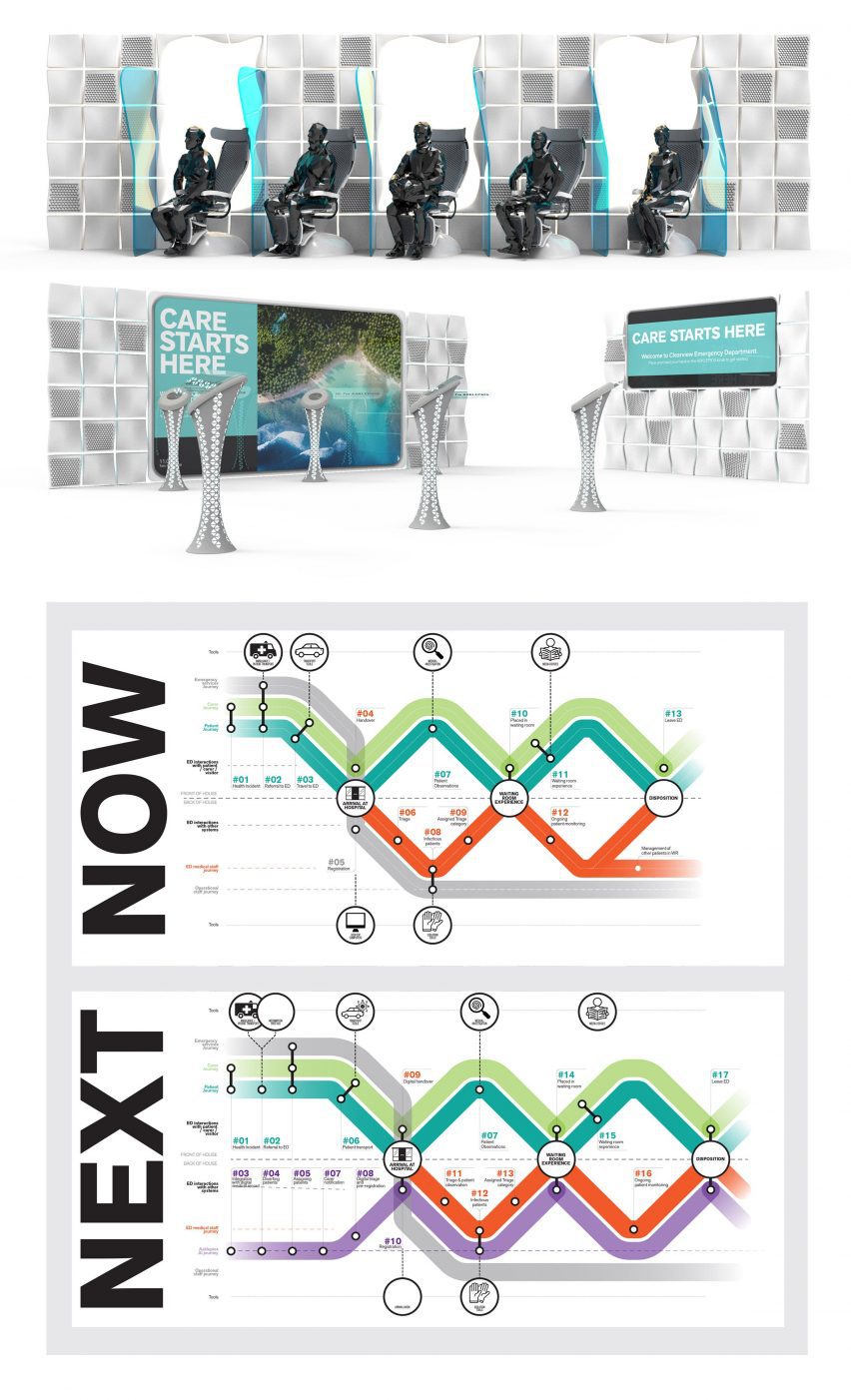
Emergency Department Futures by Troy McGee
"What will the Emergency Department waiting room of the future look like in 2030? 2050? 2100? How will we experience urgent healthcare?
"How will it be delivered. How might we access it? What are the dilemmas, challenges, and opportunities that are afforded by the future?
"This PhD research project explores the Emergency Department waiting room of the future. View the full project at emergencydepartmentfutures.com."
Student: Troy McGee
Course: PhD (Design)
Tutors: Professor Daphne Flynn, associate professor Selby Coxon, dr Rowan Page and dr Keith Joe/Design Health Collab
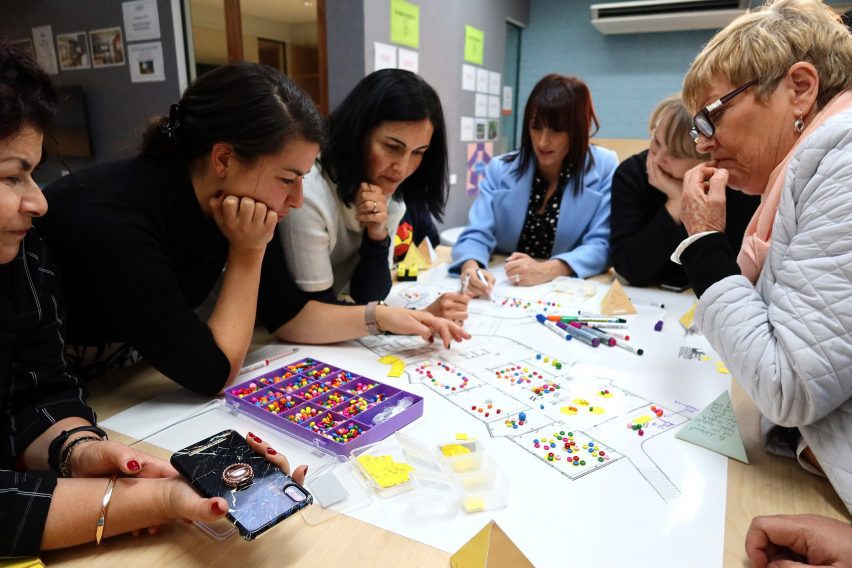
Making Space by Dion Tuckwell
"This research project explores how a co-design approach might activate the hidden affordances of collaborative learning environments. So-called 'Innovative Learning Environments' (ILEs) suggest exciting new opportunities for a wider range of pedagogies than traditional classrooms, however, teachers are often disengaged, and ill-equipped, to make meaningful use of these spaces.
"Making Space inquired into how teachers might co-create shared strategies by developing participatory action research (PAR) and a co-design approach to collaborative design research.
"Teacher-participants successfully created a community of learning about space and effective integration of ILEs and pedagogy."
Student: Dion Tuckwell
Course: PhD (Design)
Tutors: Professor Lisa Grocott/Emerging Technologies Research Lab and dr Kate Coleman/The University of Melbourne
Partnership content
This school show is a partnership between Dezeen and Monash University. Find out more about Dezeen partnership content here.